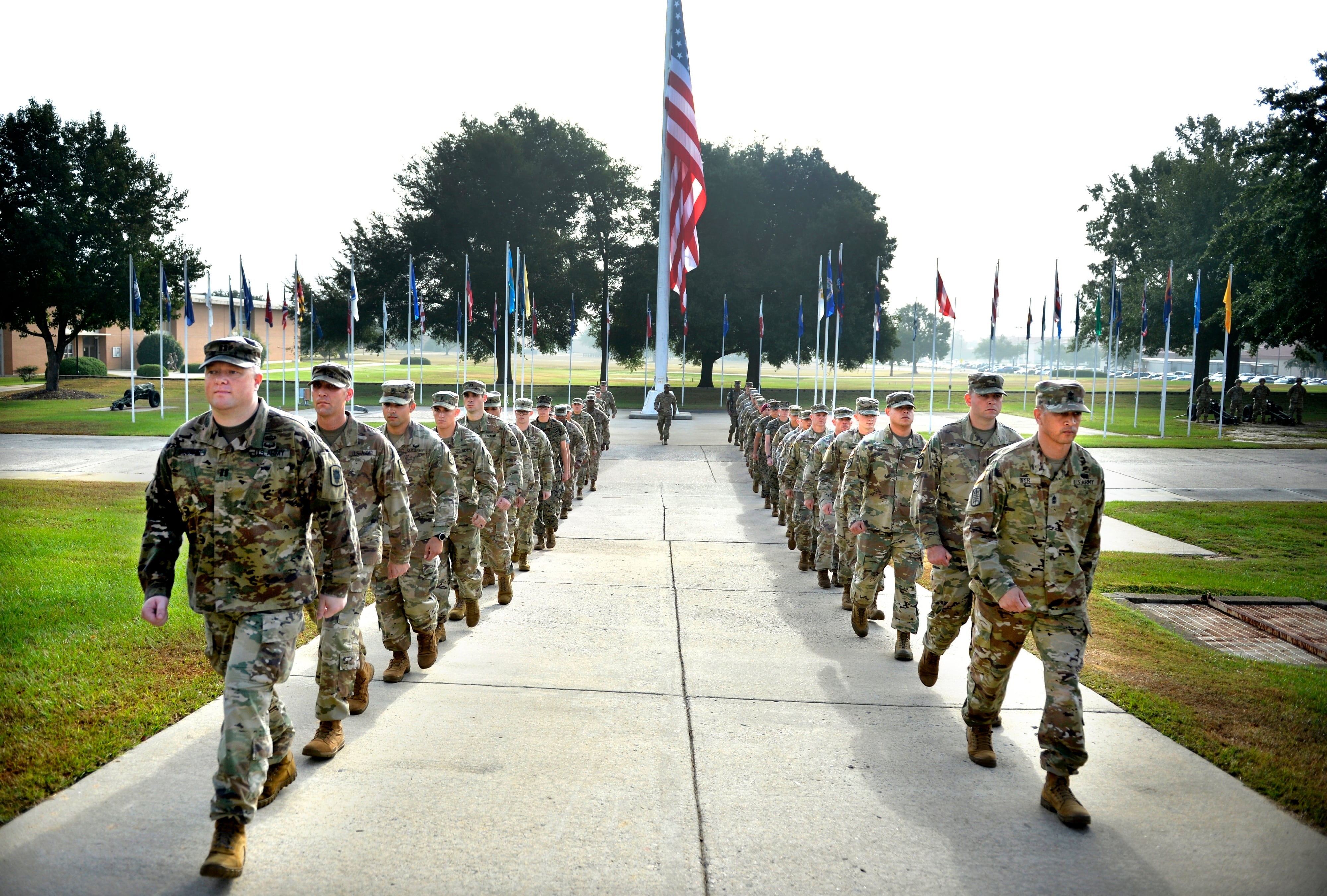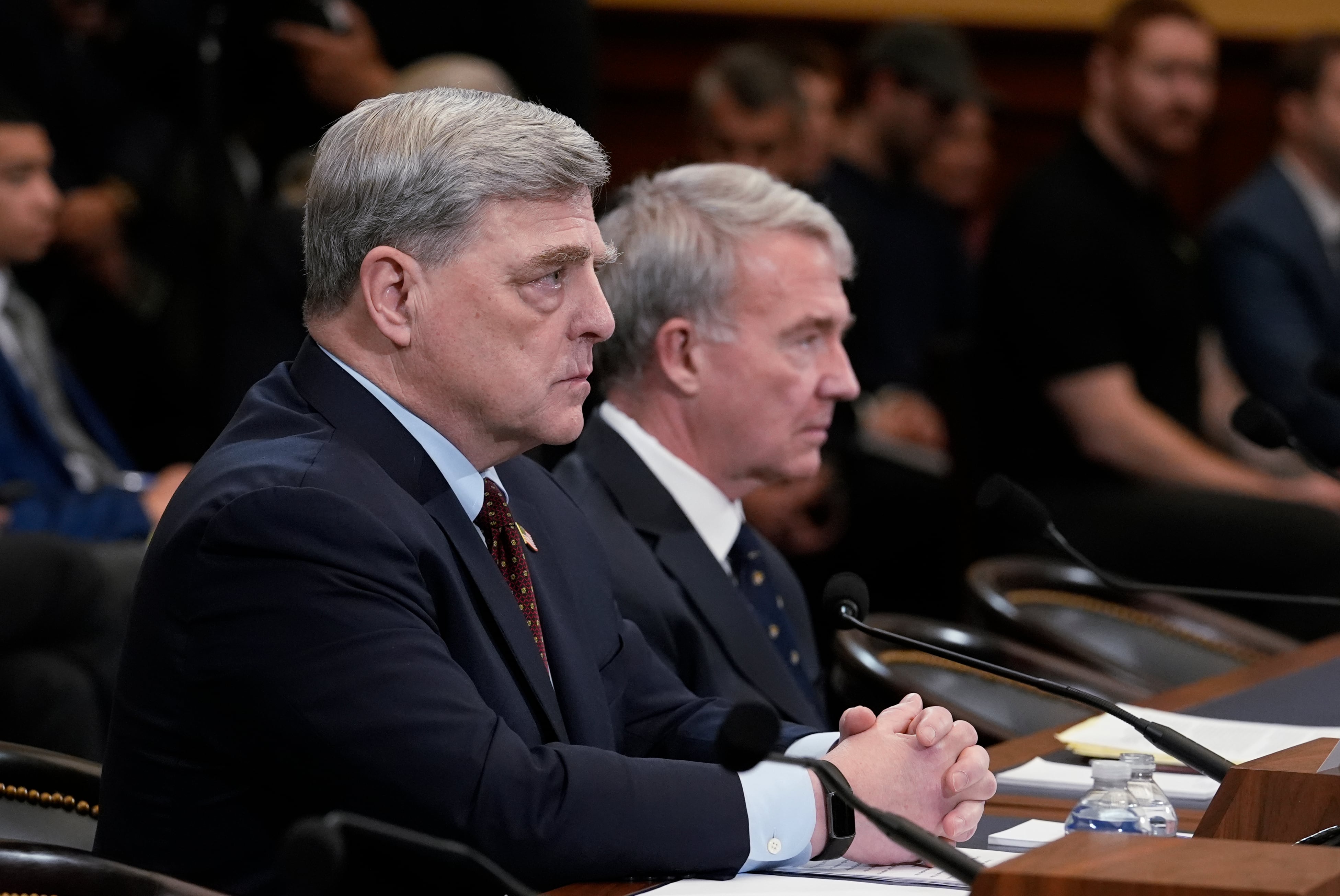A U.S. intelligence warning suggested that hundreds members from Kataeb Hezbollah, an Iran-backed militia, were poised to conduct an assault against al-Asad airbase in Iraq — hours before Tehran launched multiple ballistic missiles targeting coalition bases in Iraq on Jan. 7, a new report says.
The U.S. was tipped off that Iran might conduct an attack Tuesday, thanks to messages between Iranian military leaders that the Nation Security Agency picked up, according to the New York Times. The paper also reported that spy satellites were monitoring Iran’s missile launchers after the U.S. killed Iran’s Quds Force Commander Qassem Soleimani.
Among the various warnings detected was one al-Asad air base could face an attack from fighters affiliated with Kataeb Hezbollah, the Times reports. The group is part of Iraq’s Popular Mobilization Forces, and its supporters attacked the U.S. Embassy in Baghdad on Dec. 31 in response to a U.S. airstrike that killed 25 fighters linked to Kataeb Hezbollah.
Other threats U.S. intelligence identified also mentioned al-Asad, which is approximately 100 miles away from Baghdad.
A U.S. military official told the Times that the installation was somewhat open to attack because no Patriot antimissile systems were present at the base, having been moved to safeguard other areas of the Middle East that appeared more vulnerable to attack from Iran.
The exposure prompted U.S. commanders to make plans to partially evacuate the base and direct other service members to shelters for safety.
On Tuesday evening Eastern Standard Time, Iran launched more than a dozen ballistic missiles at coalition bases where U.S. troops are housed. A U.S. Defense official told Military times that 10 missiles hit al-Asad and another hit Erbil air base.
Ultimately, no U.S. or Iraqi casualties resulted from the attack after Iran’s missile strike Tuesday. However, Planet Labs Inc. released images depicting multiple structures were damaged from the missile strike, according to analysis the Middlebury Institute of International Studies at Monterey conducted.
President Trump tweeted that “all is well” after the attack, and the Pentagon said in a statement that al-Asad and Erbil “have been on high alert due to indications that the Iranian regime planned to attack our forces and interests in the region.”
However, Army Gen. Mark Milley, chairman of the Joint Chiefs of Staff, said Wednesday that he believed Iran sought to take U.S. lives — but missed their targets.
“Bottom line is, in my professional assessment, at al-Asad ... the points of impact were close enough to personnel and equipment and so on and so forth ― I believe, based on what I saw and what I know, that they were intended to cause structural damage, destroy vehicles and aircraft, and to kill personnel,” Milley told reporters at the Pentagon.
Approximately 5,000 U.S. troops are stationed in Iraq.




